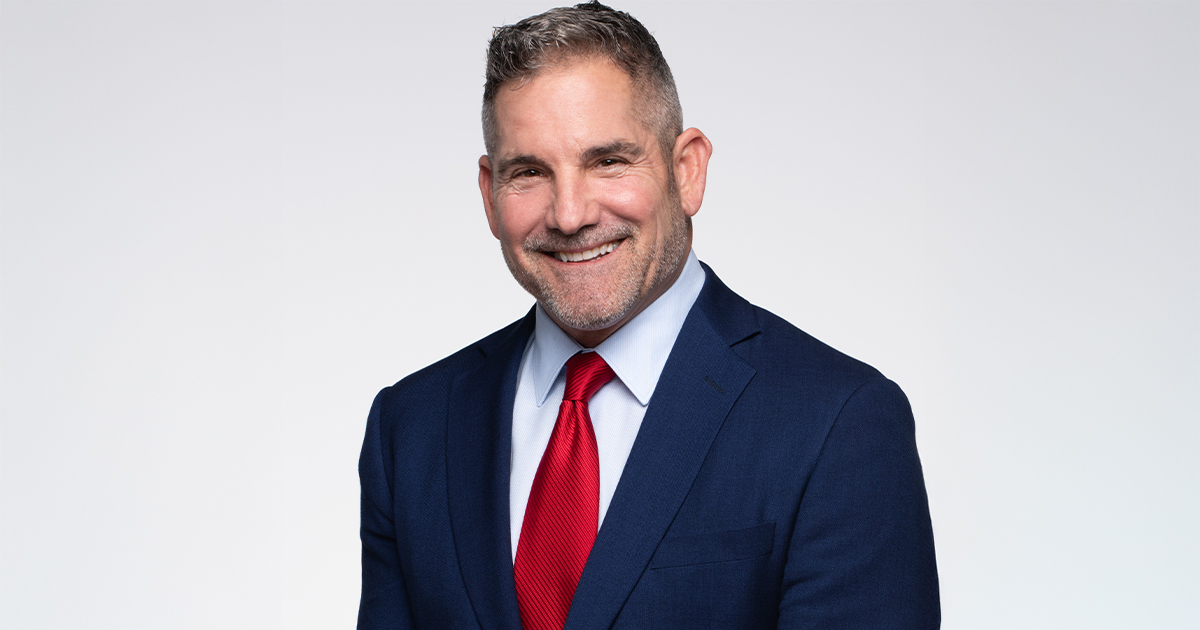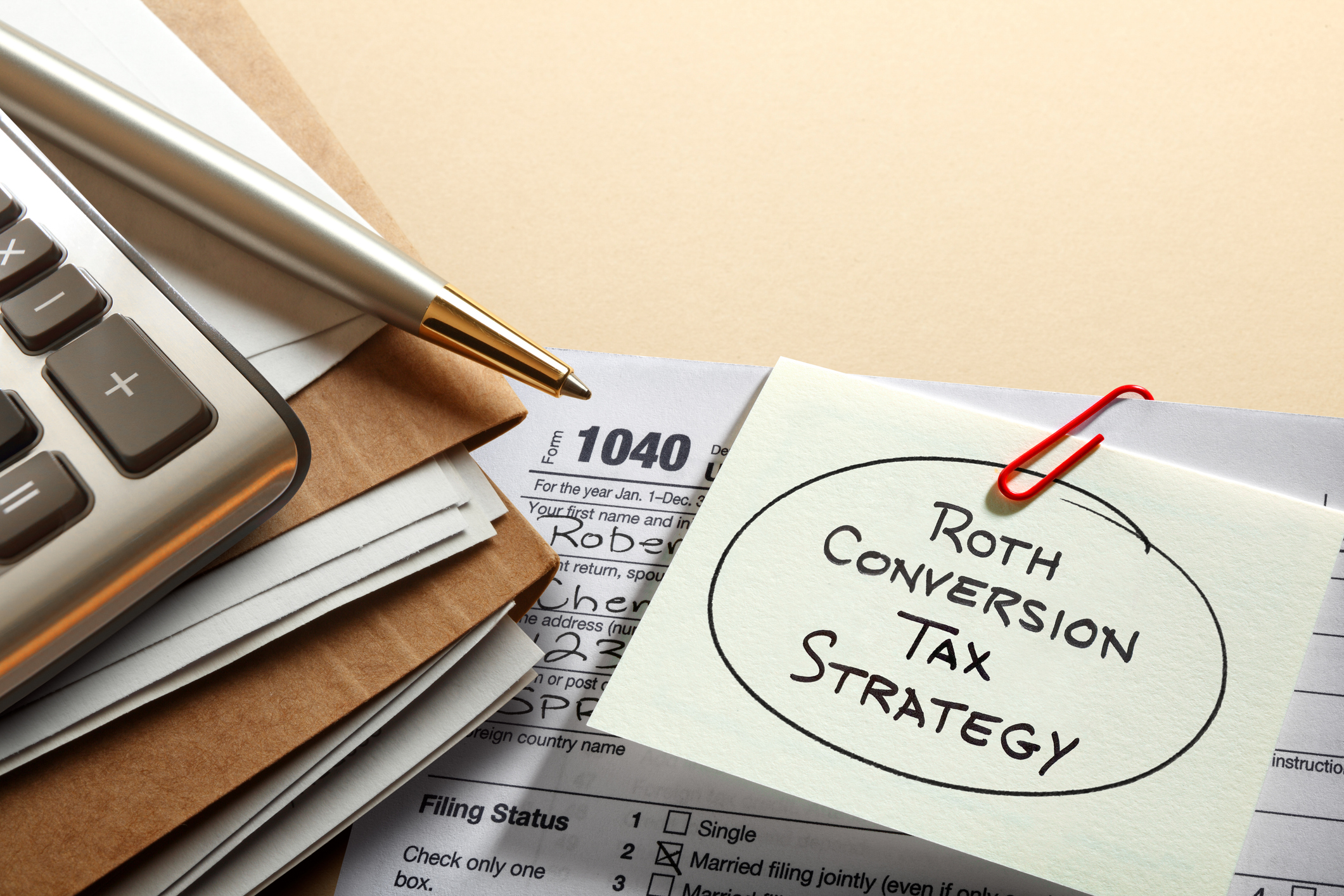A 10-Year Retirement Planning Checklist
Keep this ten-year retirement planning checklist on hand as you navigate saving, investing and other retirement decisions.


Are you ready to retire? Have you even started a retirement planning checklist? By 2030, one out of five Americans will be retirement age. Every baby boomer will be over 65, and the vanguard of Generation X will be close on their heels. If you’re on the back end of your fifties today, you’re in the final stretch of the rat race.
“This is the opportunity to correct any past mistakes and do the planning needed for a secure retirement,” says David John, senior strategic policy adviser at AARP’s Public Policy Institute in Washington, D.C. “Even if you’ve done nothing, there’s still time to put yourself on a sounder footing.”
Think you're behind the eight ball? There's no need to panic. You may even find that you have saved more than the average for your age in your 401(k) account or IRA account.
From just $107.88 $24.99 for Kiplinger Personal Finance
Be a smarter, better informed investor.

Sign up for Kiplinger’s Free Newsletters
Profit and prosper with the best of expert advice on investing, taxes, retirement, personal finance and more - straight to your e-mail.
Profit and prosper with the best of expert advice - straight to your e-mail.
Retirement planning checklist: Just get started
No pressure, of course. But navigating this stretch is easier said than done as you juggle work, saving, investing and helping the kids leave the nest. If you’re unsure where to begin, here’s a 10-year, year-by-year checklist suggesting when to handle different parts of your financial plan as you approach the retirement finish line.
This checklist assumes you plan to retire in your 60s or 70s. If you plan to retire early, say in your 40s or 50s, you may need a more aggressive plan.
Get ready for the countdown!
10 years out: Save what you can and think about how you want to live

With a decade to go, figure out how you’ll save as much as possible, says Karen Birr, manager of advice services at Thrivent, a financial services company in Minneapolis. Starting at age 50, you can contribute more per year to tax-advantaged retirement plans. These "catch-up" contributions for older workers can juice your savings if you've fallen behind.
IRAs: In 2025, the IRA contribution limit is $8,000 ($7,000 for those under 50 and an additional $1,000 catch-up for workers older than 50). Roth IRAs have income limits, so high earners may consider lowering their income to qualify for Roth IRA contributions.
401(k)s: Contribution limits for 401(k), 403(b), most 457 plans, and the federal government's Thrift Savings Plan increased by $500 in 2025. Eligible workers can now contribute $23,500 to these accounts in 2025 (up from $23,000 last year). A new "super catch-up" rule is in effect for 2025; if you are aged 60 to 63, you can contribute an extra $11,250. For workers aged 50 to 59, or 64 or older, the catch-up contribution for 2025 is $7,500.
“If your employer offers matching contributions, at the very least, contribute enough to get the full match so you get all the free money,” says Birr. For example, if your employer matches up to 6% of your yearly salary in a 401(k), aim to contribute at least 6%.
This is a good time to visualize what day-to-day life will look like in retirement. “Use your imagination and plot your ideal week on a calendar,” says Tim Maurer, chief advisory officer at SignatureFD, a financial adviser firm in Atlanta.
Maurer says this exercise can make your future retirement feel more real and motivate you to save. Figure out when you’ll spend time socializing with friends and family. Otherwise, you may quickly get lonely in retirement because you won’t see co-workers every day.
If you’re married or in a committed relationship, AARP’s John says, make sure you’re both on the same page. “People assume their spouse or partner has the same vision, but often they do not, especially if there’s a major age difference.” Don’t wait until retirement to find out you planned on traveling Europe while your spouse expects to stay home and golf every day.
9 years: Fine-tune your investments — allocation, allocation, allocation

Check your investment allocation. As you get older, shifting your portfolio from stocks to bonds makes sense to protect your savings. For example, the rule of 120 says to subtract your age from 120 to find the maximum amount you should hold in stocks. If you’re 55, you should have up to 65% of your portfolio in stocks, with the rest in bonds.
If you feel like you are behind on your savings, you could aim to hold a higher percentage of your portfolio in stocks for more growth. “You need to balance the risk of losses against the risk of not having enough money in retirement,” says Thrivent’s Birr.
But don’t take this too far. “There’s a temptation when you don’t have enough savings to try beating the market with risky investments,” warns John. High-risk investments and strategies — such as crypto, options, or day-trading — are more likely to blow up in your face than to pay off. Unscrupulous companies prey on people worried about retirement. “I get 10 to 15 emails a day in my spam folder with ‘can't-miss’ ways to build my savings. They’ll improve the lives of the people making the offer, but not me,” says John.
If you’re unsure how to balance your portfolio, look for a target-date fund. You pick the year you want to retire, and a professional investment manager builds a suitable portfolio for your timeline. Kiplinger has some suggestions for the best target-date fund families.
Imagine what could go wrong over the next few years, says Jennifer Schoonmaker-Dasch, a certified financial planner with Edward Jones in Lexington, N.C. “We plan and plan, but life doesn’t always cooperate.” Imagine how you would adjust should something serious force you out of work early, such as a major illness or downsizing.
8 years: Go prospecting — look for money you may have forgotten about

Make a list of every job you’ve ever worked. Did you leave any retirement savings behind? Old pensions? Retirement accounts? Employee stock?
This happens surprisingly often, with roughly 29.2 million forgotten 401(k)s holding an average balance of $56,616, according to Capitalize, a technology platform for workplace retirement plans. You can roll over your old 401(k) plans into your current workplace plan or an individual retirement account (IRA) because it's easier to manage everything in one place.
List your bank accounts, and see if there’s any idle cash not earning much of a return. Interest rates are at a 23-year high. Move that money to a high-interest savings account or a certificate of deposit. You can buy a 10-year CD and lock in a guaranteed 4.5% interest rate on otherwise idle cash.
This would be a good time to get a full physical as well, especially if you haven’t been seeing a doctor regularly. Get advice on the proper diet, exercise and medication you need now so you’re set up for a healthy and long retirement.
7 years: Make plans and give them test drives

Your goal this year is to set your retirement budget. “Put a price tag on your vision. How much will it cost to live that way?” asks Birr. List all your expected expenses for housing, food, taxes, travel, hobbies and insurance.
Factor in what you’ll owe for Medicare Part B premiums, which cost $185.00 per month in 2025 and usually go up each year to match rising healthcare costs. You may also decide to buy a Medicare Advantage plan or a Medigap plan plus a Medicare Part D plan for prescriptions. These private insurance plans cover the out-of-pocket costs Medicare doesn’t cover. You can collect quotes from an insurance broker now, or get estimates from Medicare.
Continue thinking of good and bad scenarios and how they might change your retirement vision, goals and budget. How’s your health? Are your friends moving away? Where are your kids living? “Perhaps you never thought you’d move, but then you have grandchildren on the other side of the country,” says Schoonmaker-Dasch of Edward Jones.
6 years: Assess your income situation — will you have enough?

Now that you’ve got your ideal budget from last year, estimate your future retirement income to see if you can cover everything. The 4% rule is one way to estimate. Multiply your expected retirement balance at retirement by 4% to see how much you could take out per year. For example, if you expect to have a $1 million portfolio, this rule predicts that you could safely withdraw $40,000 a year from your savings, adjusting this amount over time for inflation.
Add this to any other retirement income you expect, such as a pension, plus Social Security. If you don’t know your upcoming Social Security payment, you can get an estimate on the Social Security website or get help from a professional Social Security analyst. And for a sense of how you compare to peers, check out the average Social Security check by age.
If you find it easier, use our retirement calculator to see if you've saved enough. Unlike similar calculators, we won't ask for your personal information.
SignatureFD’s Maurer recommends finding a financial adviser this year to stress test the assumptions in your retirement plan. You still have time to adjust, if needed.
If you wish you had saved more in the past, AARP’s John says, you certainly aren’t alone. “No matter how much someone has, they always wish they had saved more and regularly think they’re a failure.” In fact, most Americans think they will need about $1.8 million to retire but fall far short of that target.
Leave those feelings behind and focus on building up your savings going forward. Many workers at this stage are in their peak earning years and winding down other expenses, such as taking care of the kids. Put that extra money to good use for your future.
5 years: Get granular — look at where your money comes from and where it goes

With retirement getting closer, decide when to start taking Social Security. While you can begin payments at age 62, each year (and even month) you delay increases your payment. For example, you might receive $1,400 a month starting at 62, $2,000 a month starting at 67, or $2,480 starting at age 70. That increase lasts for the rest of your life, so think carefully before starting payments.
If you have any debt, especially high-interest debt such as credit cards, consider how to pay it off over the last five years before retiring. That removes an ongoing monthly expense from your budget. John Peoples, a 62-year-old general manager of the Hockessin Athletic Club in Hockessin, Delaware, says this was a priority for him and his wife, Beth, 63, as they prepared for retirement a few years in the future. “We didn’t want these obligations hanging over our heads,” he says.
Think of how you’d pay for long-term-care costs in retirement, such as in a nursing home. Seniorliving.org estimates the median cost of a private room in a nursing home was $131,583 annually in 2025. Assisted living services cost $72,924.
One way to cover long-term care costs is through a long-term-care insurance policy. Another option is a hybrid life insurance policy. If you need long-term care while you’re alive, you’ll receive money from the policy, and if you don't ever need care, the policy will pay your heirs the insurance death benefit.
Consider where you might want to live, such as a retirement community. If the thought of assisted living or long-term care leaves you cold, know that senior care is much better than during the pandemic. According to a recent J.D. Power survey, senior living communities have improved over the past few years.
4 years: Make sure you’re covered, financially and medically

At this stage, John from AARP says, you might consider investing part of your portfolio in an annuity. These insurance contracts turn your savings into future income, which can be guaranteed to last your entire life. They can also grow your savings during these last few years before you retire and start collecting income, often with a guaranteed return and protection against market losses. Annuities have considerable surrender charge penalties if you cancel before the contract ends, though. Don’t buy one unless you can commit to the timeline.
If you plan to retire before qualifying for Medicare at age 65, decide now how you’ll maintain health insurance coverage. Your job could offer COBRA, allowing you to extend the same health insurance for another 18 months. Your premiums will increase because your employer will no longer have to chip in.
If you’re married and your spouse has insurance at work, see if you could enroll in that plan. Finally, Affordable Care Act plans are available. The premiums are based on age and are more expensive for someone near retirement. However, a government subsidy is in place through 2025, so the premiums cannot cost more than 8.5% of your annual income for a silver, or moderate-level, plan.
3 years: Give your retirement a tryout

Now would be a good time to test-drive your dream retirement lifestyle to see if it’s what you expected. “My friend thought he would love owning a coffee shop in retirement,” recalls Maurer, the financial adviser in Atlanta. “He tried managing one temporarily and found out the job was mainly washing dishes. He lasted less than a month.” Take a few weeks, if possible. If you want to live somewhere else, such as at the beach, stay there to see if it’s still enjoyable for an extended stay. If you are younger, consider a sabbatical, which might be a smarter move than early retirement.
Before retiring, consider converting pretax retirement accounts, such as a traditional IRA or 401(k), into a Roth version. You’d owe taxes upfront on any amount transferred, but the future withdrawals would be tax-free. This move could make sense if you scale back your work and are now in a lower tax bracket.
You should also review your estate plan. If you are lucky enough to be wealthy, consider estate planning tips for millionaires. Or conversely, how to save money on estate planning. Make sure your will is up to date, if you have one. If you don’t, write one. Also, check the beneficiary designations on your various accounts, retirement plans and life insurance policies. These instructions override your will. If the wrong person, such as an ex-spouse, is listed, he or she would inherit the accounts when you pass away instead of your other heirs.
Finally, consider having an estate lawyer create a financial power of attorney and a living will/advance health care directive, naming a trusted family member or other loved one to make your financial and medical decisions when you cannot.
2 years: Go for one more retirement review

Consult with a financial adviser again to ensure you’re ready to retire with your current goals and vision. Discuss your retirement budget, expected income, portfolio allocation and insurance plan to make sure the numbers all work out. If you’re still short, consider whether you are willing to work longer to save more or if there’s anything in your retirement budget you could adjust.
If you plan on enrolling in Medicare when you retire, the tax return you file two years before enroll can impact your premiums for Medicare Part B and Part D. For instance, whether you pay an income-related monthly adjustment amount (IRMAA) surcharge in 2025 depends on the income shown on your 2023 tax returns.
Your IRMAA eligibility is determined by the Social Security Administration and is calculated on a sliding scale with five income brackets topping out at $500,000 and $750,000 for individual and joint filing, respectively. These figures change annually with inflation.
Consider a phased-in retirement two years from now, where you gradually reduce your hours or switch to a more enjoyable job rather than stopping cold turkey. “Is there a job you always dreamed of doing, like working at a nonprofit?” asks Maurer.
Even if it means a pay cut, working can help your savings last longer and keep your mind sharp. Some part-time work could also offer health insurance benefits, which is especially useful if you retire before turning 65 and need something until Medicare starts. Just be sure you know how working in retirement could pose risks to some of your benefits if you don't plan adequately.
“Sitting on a beach might be fun for a couple of weeks, but after that?” asks Peoples, the health club manager in Delaware, who agrees with not stopping work entirely when he retires. He currently volunteers at an animal rescue and plans to increase those hours while also considering options for part-time work, including babysitting his grandkids.
1 year: Ready, set, ... retire already

“People want to end their career in a way they can be proud of,” says Schoonmaker-Dasch, the planner with Edward Jones, noting that the last year before retirement is a time to tie up loose ends. Think of the last major project you want to wrap up or how you could adequately train and hand the reins over to the next person taking over. Leaving on a positive note can help with the emotions of this life transition.
Plan how to best use your remaining work income, such as using your last bonus to pay off your car, so you can retire debt-free. If you still have family and friends relying on you financially, Schoonmaker-Dasch says, it's time to set boundaries. “Warn your 25-year-old son that he’s going to start paying his cell phone bill.”
One budget game-changer is to move to a lower-cost area right after you retire, says Maurer with financial advisor firm SignatureFD. “Perhaps you move from the East Coast to a state like Florida, Tennessee or Texas.” Not only do these states have a lower cost of living, but they also don’t charge income tax. “You could make an upfront profit on the home sale and then pay less every day for the rest of retirement.”
Peoples doesn’t know exactly when his last year of work in Delaware will be, but says he and his wife feel prepared, thanks to their planning over the past decade. “When that day comes, we’ll be ready to enjoy the opportunities retirement presents. There’s still a lot of highway ahead of us.”
Note: This item first appeared in Kiplinger Retirement Report, our popular monthly periodical that covers key concerns of affluent older Americans who are retired or preparing for retirement. Subscribe for retirement advice that’s right on the money.
Want more guidance on retirement savings? Sign up for Kiplinger's six-week series, Invest for Retirement.
Related Content
Profit and prosper with the best of Kiplinger's advice on investing, taxes, retirement, personal finance and much more. Delivered daily. Enter your email in the box and click Sign Me Up.

David is a financial freelance writer based out of Delaware. He specializes in making investing, insurance and retirement planning understandable. He has been published in Kiplinger, Forbes and U.S. News, and also writes for clients like American Express, LendingTree and Prudential. He is currently Treasurer for the Financial Writers Society.
Before becoming a writer, David was an insurance salesman and registered representative for New York Life. During that time, he passed both the Series 6 and CFP exams. David graduated from McGill University with degrees in Economics and Finance where he was also captain of the varsity tennis team.
- Donna LeValleyRetirement Writer
- Ellen B. KennedyRetirement Editor, Kiplinger.com
-
 I'm a Government Employee and Need to Get By Until the Shutdown Ends. What Can I Do?
I'm a Government Employee and Need to Get By Until the Shutdown Ends. What Can I Do?The second-longest shutdown in history is leaving many federal workers with bills due and no paycheck to cover them. Here's what you can do to get by.
-
 Grant Cardone Tells Us the Biggest Retirement Mistake You Can Make
Grant Cardone Tells Us the Biggest Retirement Mistake You Can MakeThe entrepreneur, real estate investor and motivational speaker tells us why people should never stop working.
-
 Five Estate Planning Pitfalls and How to Avoid Them
Five Estate Planning Pitfalls and How to Avoid ThemFrom procrastination to AI, these five estate planning pitfalls could mean your heirs are left with bureaucratic hassles — or a reduced inheritance.
-
 Deciding on Senior Living? 10 Things You Should Know
Deciding on Senior Living? 10 Things You Should KnowSenior living options are no longer God's waiting room.
-
 Child-Free Cruises Perfect For Your Retirement Celebration
Child-Free Cruises Perfect For Your Retirement CelebrationHow to find a bespoke ocean or river vacation for adults. Many of these options are smaller, charming river cruises, expeditions, or niche experiences.
-
 Eight Factors to Consider When Considering a Roth Conversion
Eight Factors to Consider When Considering a Roth ConversionRoth conversions, which transform traditional IRAs into Roth IRAs, are a powerful retirement and tax tool. Here are eight facts to get you started.
-
 What to Do About These Three Medicare Changes During Open Enrollment
What to Do About These Three Medicare Changes During Open EnrollmentWith costs due to rise sharply next year, look for coverage that protects your wallet as well as your health.
-
 6 Steps to Protect Your Retirement Savings
6 Steps to Protect Your Retirement SavingsDon't let a shaky economy and volatile market derail your retirement. These moves will help ensure your money lasts as long as you do.
-
 Decluttering Tips to Get a Head Start on Downsizing
Decluttering Tips to Get a Head Start on DownsizingStrategies include starting small, adopting a system, getting help from others and being ruthless about what to keep, even when it comes to sentimental items or inherited possessions.
-
 Seven Things You Should Do Before 2026 Because of One Big Beautiful Bill Changes
Seven Things You Should Do Before 2026 Because of One Big Beautiful Bill ChangesThe new law ushers in significant changes for most taxpayers. Make these moves now to take advantage of them.